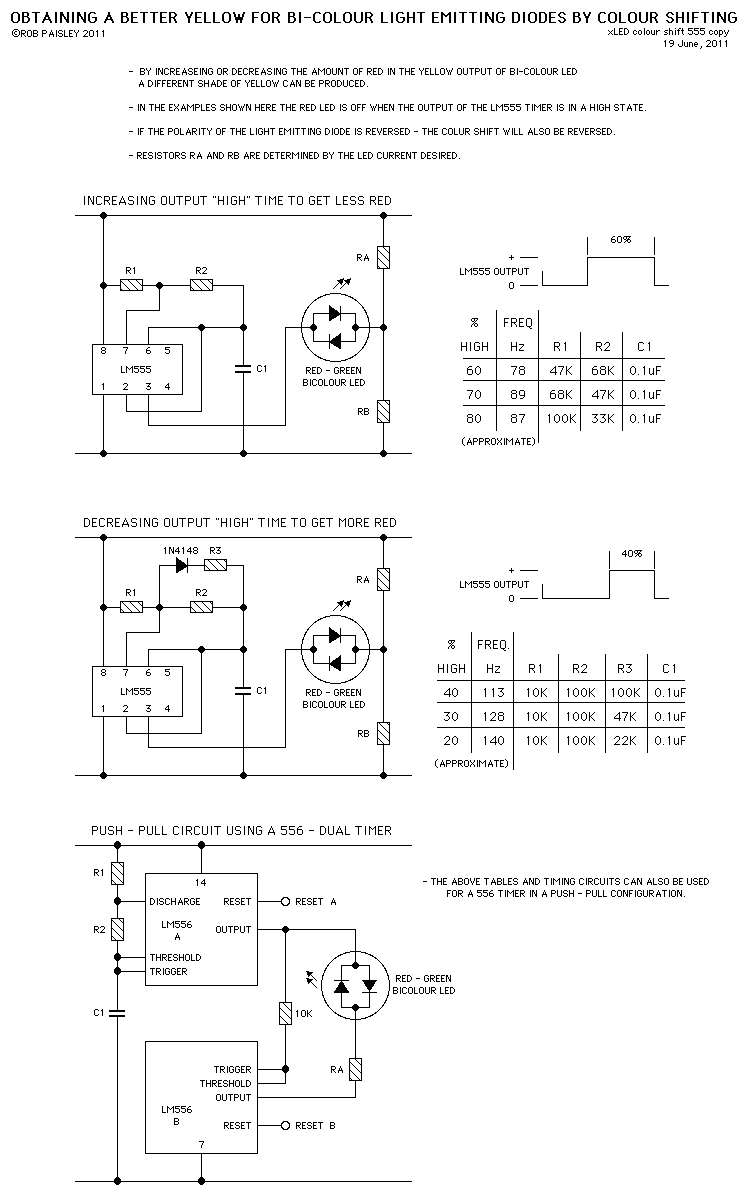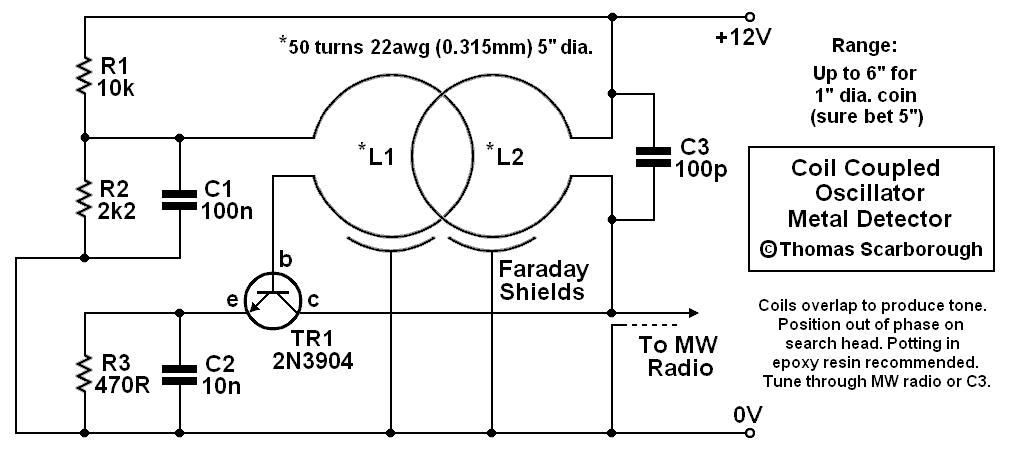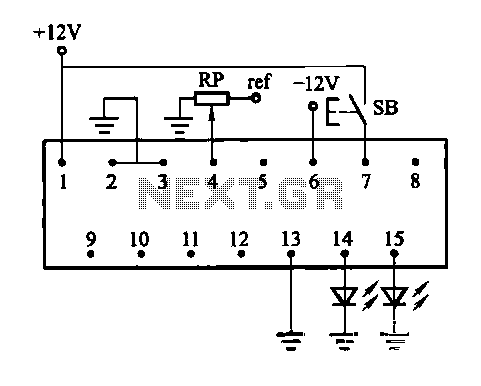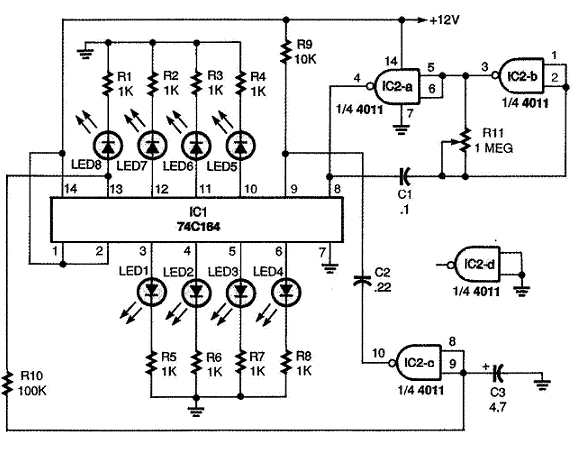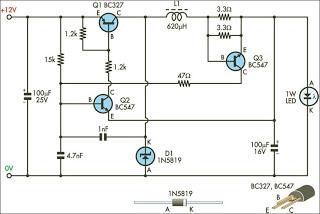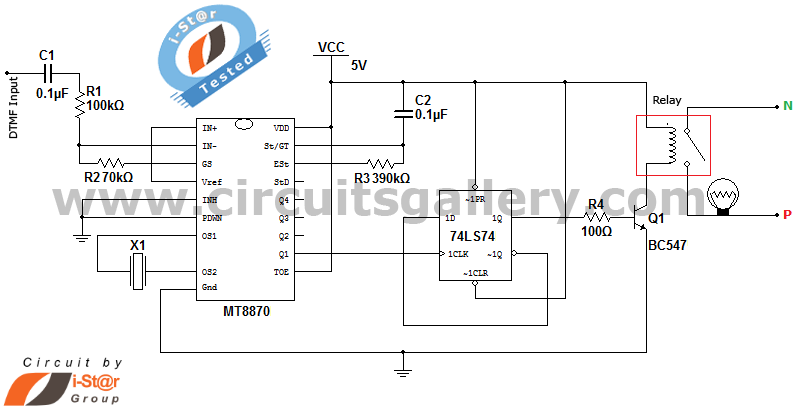
up down fading led
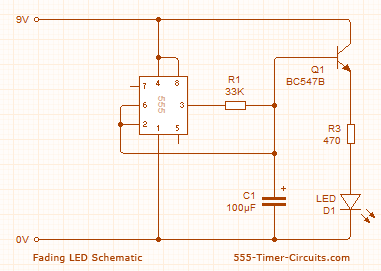
These two circuits create a fading effect for an LED. The first circuit charges a 100µF capacitor, and a transistor amplifies the current entering the capacitor, delivering 100 times this value to the LED through the collector-emitter pins. The circuit requires 9V for operation, as pin 2 of the 555 timer detects 2/3 Vcc before changing the output state, resulting in a maximum of 5.5V available through a 470Ω resistor to illuminate the LED.
The described circuit utilizes a 555 timer IC configured in an astable mode to generate a PWM (Pulse Width Modulation) signal, which controls the brightness of the LED by varying the duty cycle. The charging and discharging of the 100µF capacitor determine the timing intervals, which in turn affect the fade rate of the LED.
In the circuit, the 555 timer's output pin is connected to the base of a bipolar junction transistor (BJT), which acts as a switch. When the output from the 555 timer goes high, it allows current to flow from the collector to the emitter of the transistor, which is connected in series with the LED. The transistor's gain (beta) allows it to amplify the small base current into a much larger collector current, effectively enabling the LED to receive a higher current than what is supplied from the 555 timer directly.
To achieve the fading effect, the capacitor charges through a resistor connected to the supply voltage (9V). As the capacitor charges, the voltage across it increases until it reaches the threshold set by the 555 timer (2/3 of Vcc). At this point, the output state of the timer changes, causing the capacitor to discharge and the LED to dim. The cycle then repeats, creating a smooth fading effect as the LED transitions from fully off to fully on.
The resistor value of 470Ω is crucial as it limits the current flowing through the LED, ensuring it operates within safe limits while still providing sufficient brightness. The combination of the timing components (resistors and capacitors) connected to the 555 timer determines the fade duration and frequency. Adjusting these components allows for customization of the LED fading effect to suit specific applications or aesthetic preferences.
In summary, this circuit effectively demonstrates the principles of current amplification using a transistor, the timing capabilities of a 555 timer, and the characteristics of capacitive charging and discharging, all working together to create a visually appealing LED fade on and off effect.These two circuits make a LED fade on and off. The first circuit charges a 100u and the transistor amplifies the current entering the 100u and delivers 100 times this value to the LED via the collector-emitter pins. The circuit needs 9v for operation since pin 2 of the 555 detects 2/3 Vcc before changing the state of the output so we only have a maximum of 5.
5v via a 470R resistor to illuminate the LED. 🔗 External reference
The described circuit utilizes a 555 timer IC configured in an astable mode to generate a PWM (Pulse Width Modulation) signal, which controls the brightness of the LED by varying the duty cycle. The charging and discharging of the 100µF capacitor determine the timing intervals, which in turn affect the fade rate of the LED.
In the circuit, the 555 timer's output pin is connected to the base of a bipolar junction transistor (BJT), which acts as a switch. When the output from the 555 timer goes high, it allows current to flow from the collector to the emitter of the transistor, which is connected in series with the LED. The transistor's gain (beta) allows it to amplify the small base current into a much larger collector current, effectively enabling the LED to receive a higher current than what is supplied from the 555 timer directly.
To achieve the fading effect, the capacitor charges through a resistor connected to the supply voltage (9V). As the capacitor charges, the voltage across it increases until it reaches the threshold set by the 555 timer (2/3 of Vcc). At this point, the output state of the timer changes, causing the capacitor to discharge and the LED to dim. The cycle then repeats, creating a smooth fading effect as the LED transitions from fully off to fully on.
The resistor value of 470Ω is crucial as it limits the current flowing through the LED, ensuring it operates within safe limits while still providing sufficient brightness. The combination of the timing components (resistors and capacitors) connected to the 555 timer determines the fade duration and frequency. Adjusting these components allows for customization of the LED fading effect to suit specific applications or aesthetic preferences.
In summary, this circuit effectively demonstrates the principles of current amplification using a transistor, the timing capabilities of a 555 timer, and the characteristics of capacitive charging and discharging, all working together to create a visually appealing LED fade on and off effect.These two circuits make a LED fade on and off. The first circuit charges a 100u and the transistor amplifies the current entering the 100u and delivers 100 times this value to the LED via the collector-emitter pins. The circuit needs 9v for operation since pin 2 of the 555 detects 2/3 Vcc before changing the state of the output so we only have a maximum of 5.
5v via a 470R resistor to illuminate the LED. 🔗 External reference
Warning: include(partials/cookie-banner.php): Failed to open stream: Permission denied in /var/www/html/nextgr/view-circuit.php on line 713
Warning: include(): Failed opening 'partials/cookie-banner.php' for inclusion (include_path='.:/usr/share/php') in /var/www/html/nextgr/view-circuit.php on line 713
